Doisneau, born in 1912 in Gentilly, became an amateur photographer at the age of sixteen. He sold his first photo story in 1932 to the magazine Excelsior and, in 1934, was employed by Renault as an industrial advertising photographer at the car factory in Boulogne-Billancourt, a suburb of Paris.
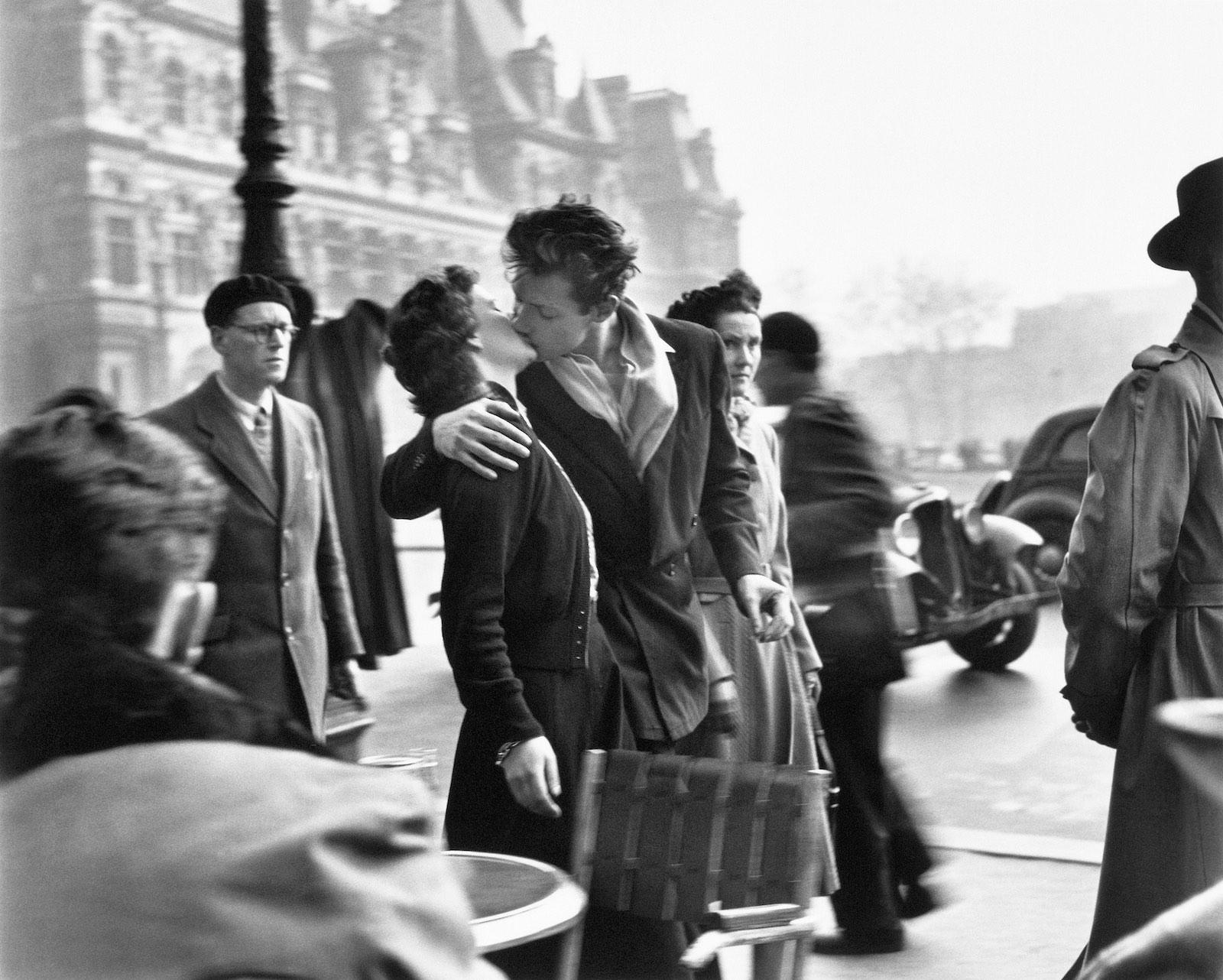
Robert Doisneau, Le baiser de l’Hôtel de Ville, Paris 1950.
Every art form has depicted love and romance innumerable times. Yet, if you were to ask about a famous kiss that appeared in a photograph, two will probably make the cut: V-J Day in Times Square by Alfred Eisenstaedt and The Baiser de l’Hôtel de Ville (Kiss by the Hôtel de Ville) by the French photographer Robert Doisneau. If the former recorded the American celebrations of Japan’s surrender during the Second World War, the latter encapsulated the idea that the world had of Paris: the city for love and romanticism.
The Baiser de l’Hôtel de Ville was chosen as the centerpiece of the exhibition dedicated to Robert Doisneau at Palazzo Roverella in Rovigo, a city in the Northeast of Italy famous for its Palladian villas and its long history. The exhibition is organized thematically—children, the world of work, the spectacle of the street, portraits, and fashion—a choice that highlights the scope and the fascination for humanity of Doisneau’s works.
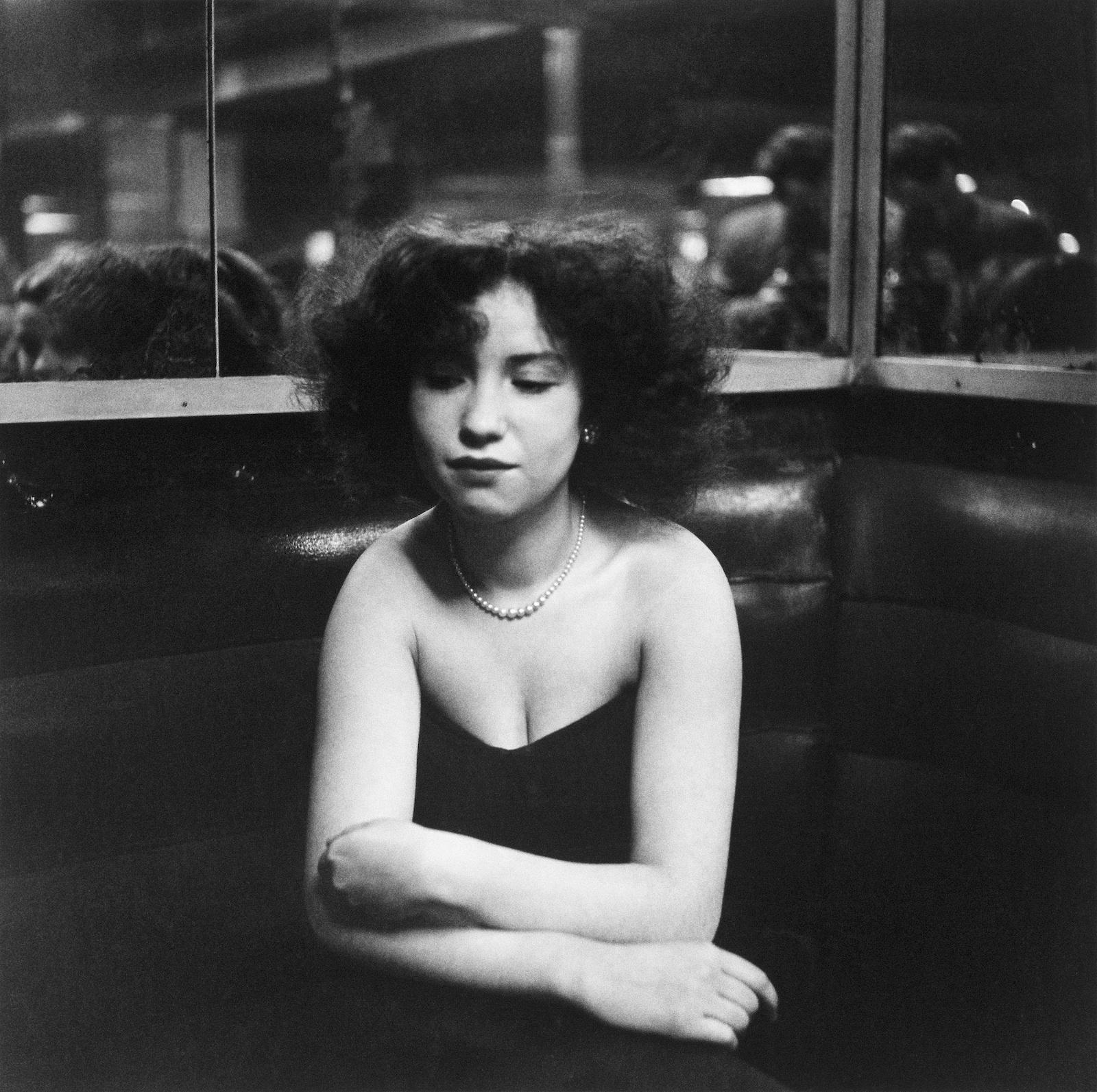
Robert Doisneau, Mademoiselle Anita, cabaret "La Boule Rouge," rue de Lappe, Paris, 1950.
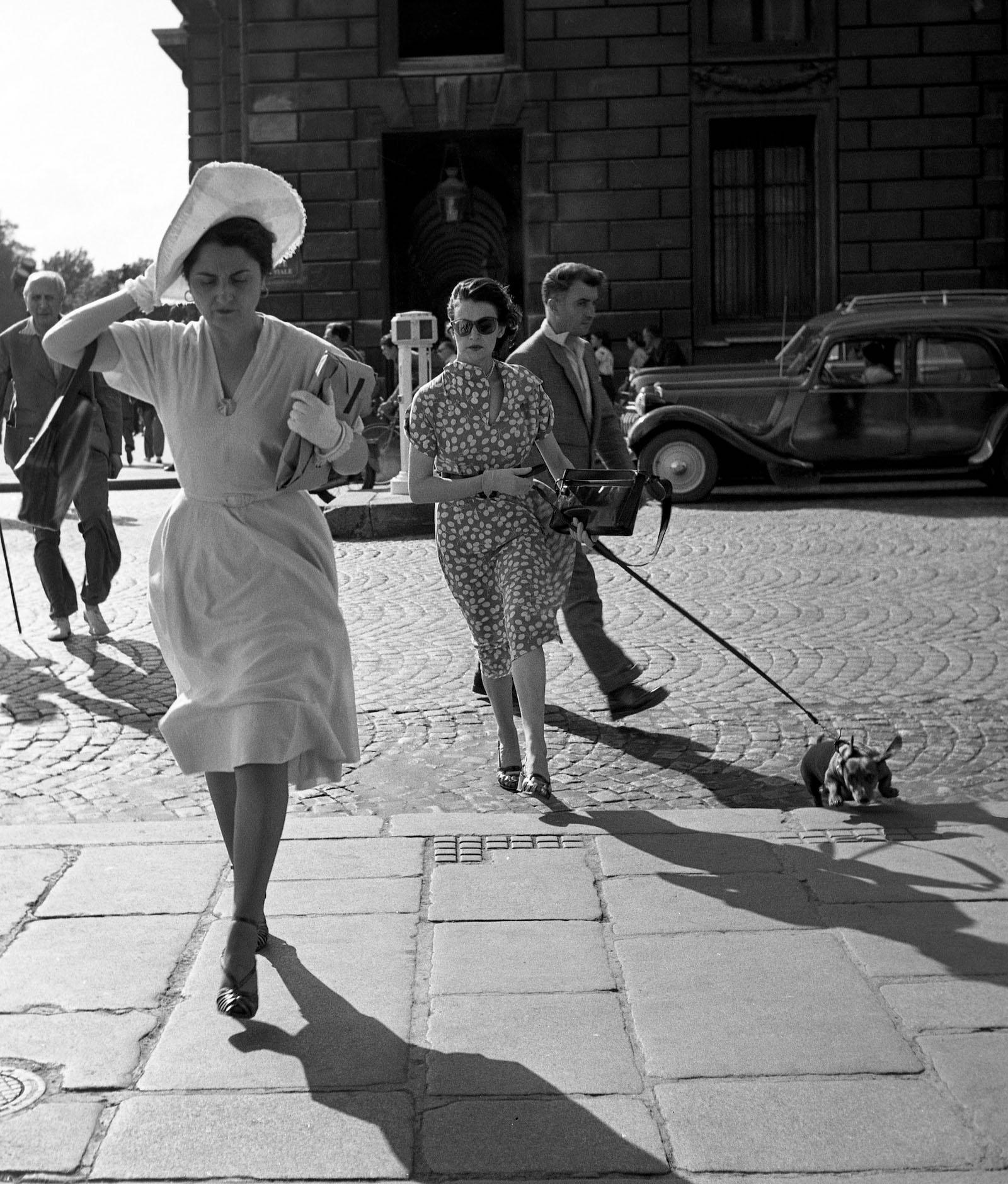
Robert Doisneau, Vent rue Royale, Paris, 1950.
Although grateful for what the Renault experience had taught him, Doisneau left the job in 1939 and established himself as an independent photographer for Rapho Agency. Gabriel Bauret, curator of the exhibition, explains that: “Robert Doisneau has always been a rebel spirit [...] in his work alongside his many commissions for the press and advertising. And then, when he got fed up with the constraints when he was employed by Renault, he chose freedom.”
The outbreak of WWII brought a stop to Doisneau’s career because, drafted into the French army, he served as a soldier for one year and then, for five years until 1945, as a document forger for the French Resistance. His most important works were created after the end of the war. Through Doisneau’s camera, Paris—with its people, artists, intellectuals, and children—became the city that the world dreamed about.
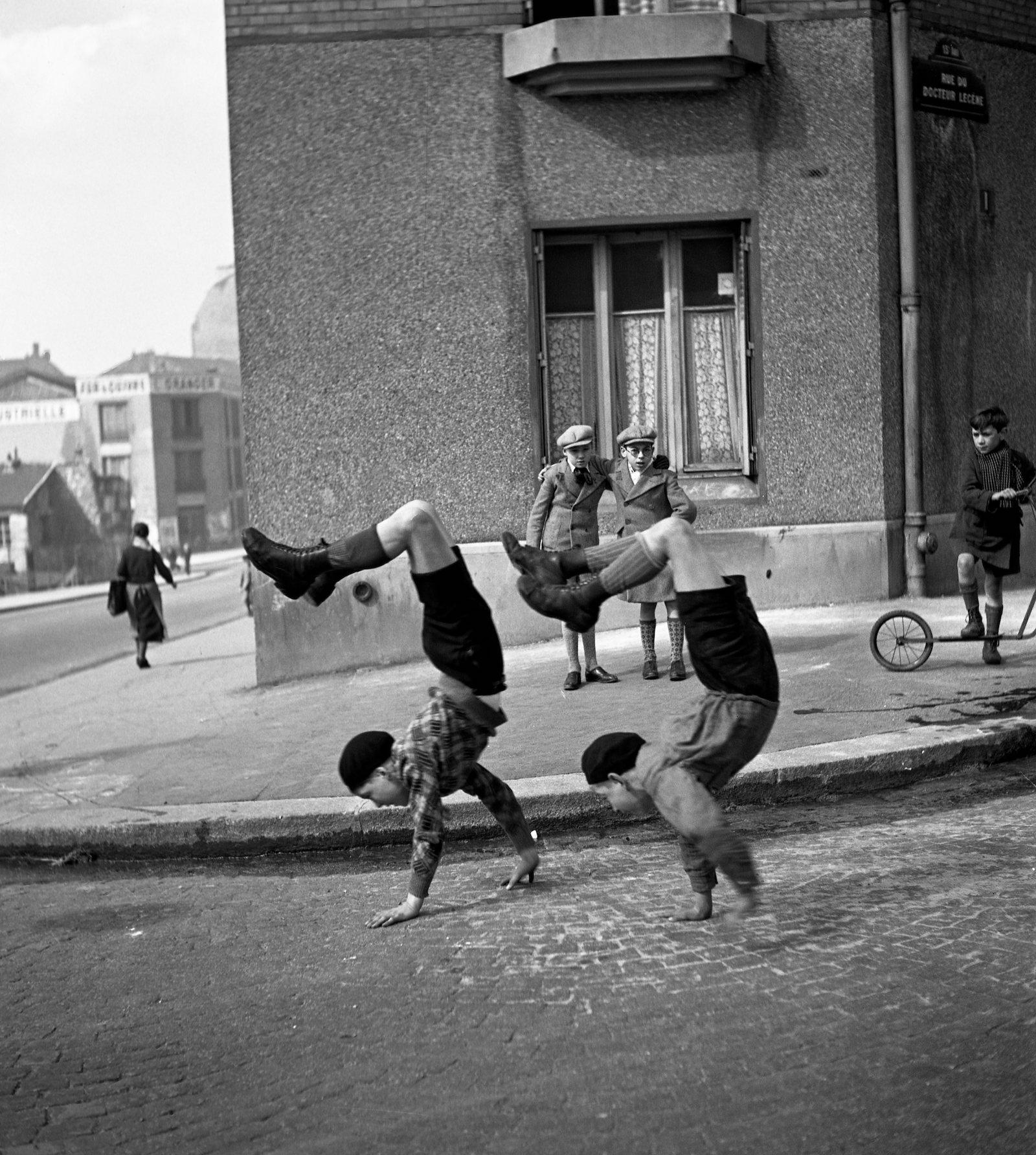
Robert Doisneau, Les frères, rue du Docteur Lecène, Paris, 1934.
Doisneau’s approach was very much the one of a fisherman: have your tools and bait ready and wait patiently for a fish. It is no secret that some of his images, The Kiss by the Hotel de Ville is one example, were staged, or better, were prepared in order to convey exactly what Doisneau had in mind.
Despite the staging, his photographs never lack warmth and affection towards the subjects and the authenticity of the feelings portrayed. “His photography is built on this understanding of the world that surrounds him and which makes the strength of his images, by dint of having been able to look at it throughout his life.” Notes Bauret, “Just as an architect must draw tirelessly to understand the structure of a building, or as a musician must practice his scales to master his instrument, a photographer must look intensely at his subjects to give an accurate image.”

Robert Doisneau, Fox-terrier au Pont des Arts, Paris, 1953.
The deep knowledge that Doisneau had of his surroundings, of the Parisians, and the atmosphere of the time, allowed him to break the rules of the photographic game and pursue his freedom.
“To disobey means not to submit to the demands of a fashion or an artistic trend. Robert Doisneau belongs to what has been called humanist photography in France, but he has always practiced it in his own way.” Explains Bauret, “He followed his own personal impulses.[...] in his approach, his way of dealing with subjects, his personal touch which combines great benevolence and a sense of humor, he distinguished himself from his colleagues.”
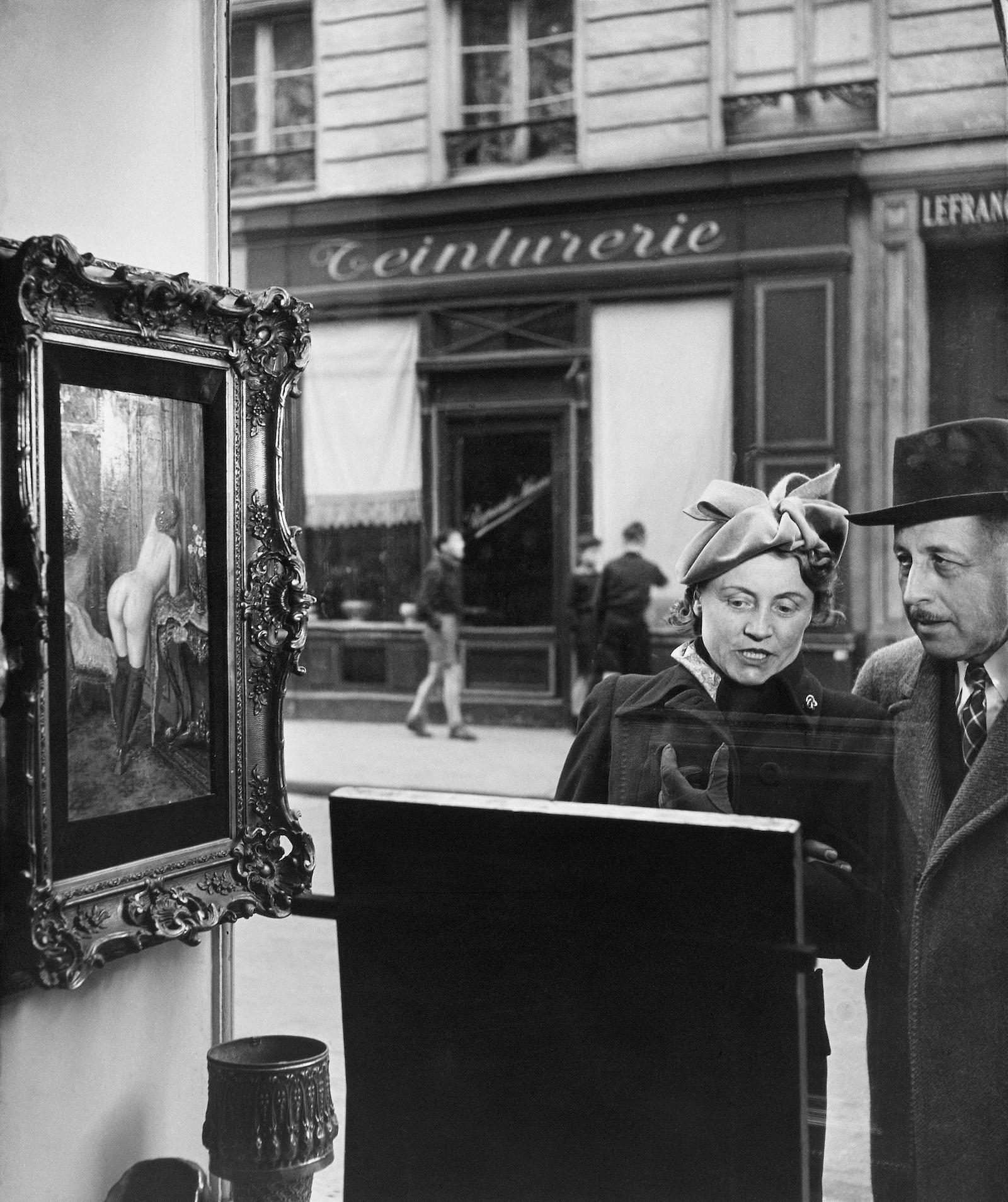
Robert Doisneau, Un regard oblique, Paris, 1948.
Doisneau was able to create and record a world full of wonder and possibilities, a state of being that is usually lost in adulthood. Robert Doisneau had the eyes of a child: they shined with curiosity and mischief. The motto that accompanied him throughout his life and career was simple: Désobéissance toujours, meaning disobedience, always. Just like children.
























